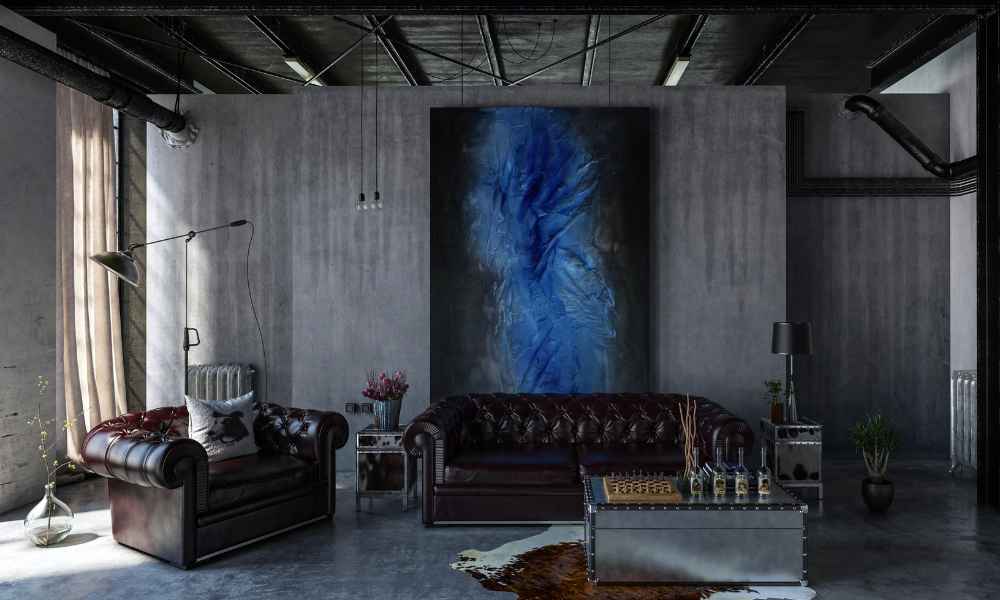Rustic industrial living room furniture combines the earthy charm of rustic aesthetics with the bold, utilitarian appeal of industrial elements to create a unique and inviting space. This style, perfect for those who appreciate a blend of old-world craftsmanship and contemporary ruggedness, offers both visual impact and functional comfort. In this exploration of rustic industrial living room furniture, we’ll uncover the defining characteristics of this popular design trend, the materials that are most commonly used, and the ways these elements come together to create pieces that are both striking and practical.
Understanding Rustic Industrial Style
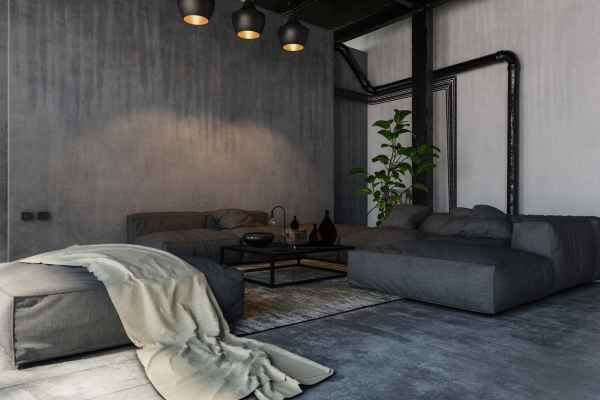
Rustic industrial style is characterized by its use of raw, natural materials and a no-frills approach to design that highlights function over form. This style merges the warmth and welcoming feel of rustic decor with the edgy, mechanical vibes of industrial themes. The result is a robust aesthetic that feels both grounded and cutting-edge. Ideal for lofts, apartments, and homes that aim to combine comfort with an urban touch, rural living room furniture often features exposed hardware, a mix of textures, and a neutral palette that emphasizes materials over color.
Materials Commonly Used In Rustic Industrial Furniture
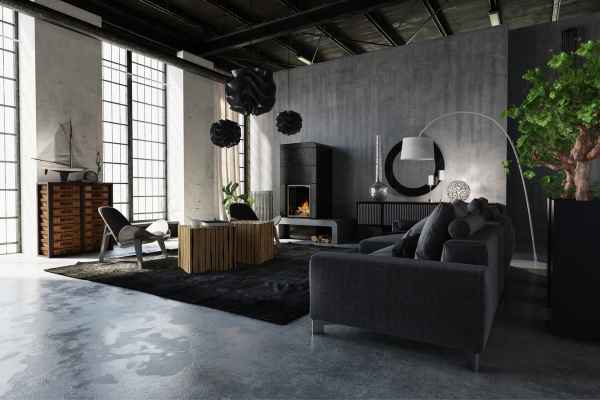
The allure of rustic furniture lies in its material integrity, where the authenticity and quality of the materials used are as important as the design itself. Commonly, this furniture style incorporates a lot of wood and metal, each adding their distinct flavors to the pieces. These materials are often left in their natural state or minimally finished to reflect their innate properties and contribute to the overall organic-industrial vibe of the space.
Wood: Types And Finishes
Wood is a staple in rustic industrial designs, bringing warmth and natural beauty to the ruggedness of industrial elements. Hardwoods like oak, maple, and walnut are popular for their durability and grain patterns. Which stand out under simple finishes or even when left completely raw. Softwoods like pine are also used for their texture and ease of sourcing. Finishes in rustic furniture often aim to enhance the natural appearance of the wood. With treatments that highlight the grain and natural imperfections, such as knots and saw marks, making each piece uniquely appealing.
Metal: Types And Treatments
Metal, particularly iron, steel, and sometimes copper, plays a crucial role in rustic furniture. These metals are favored for their strength and versatility, often forming the frameworks of tables, chairs, and shelving units or used as accents and hardware. The metal is typically treated to prevent corrosion but left otherwise unembellished to maintain its industrial feel. Finishes might include powder coating, patinas, or a simple polish to protect the metal while keeping its raw, gritty aesthetic.
Combination Of Materials
The real charm of rustic industrial living room furniture lies in the creative combination of wood and metal. This fusion not only enhances the functionality and durability of the furniture but also its aesthetic appeal. Design elements often include wood slabs supported by metal frames, shelving units combining wooden shelves with metal supports. Or metal accents on wooden furniture that highlight the industrial influence. This blend not only ensures robust construction but also adds an artistic layer to the pieces, making them focal points in any living room.
Essential Furniture Pieces For A Rustic Industrial Living Room
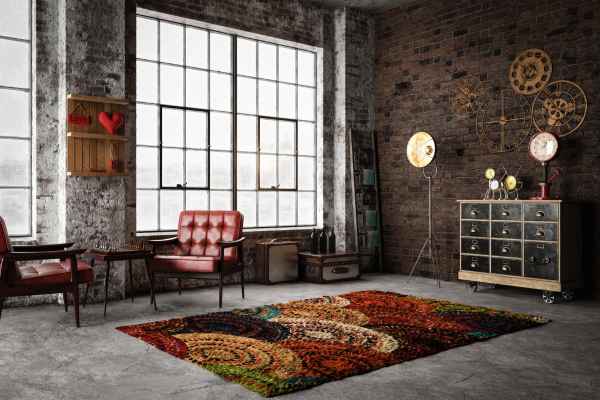
Creating a cohesive rustic industrial living room starts with selecting the right furniture pieces that not only embody the style but also enhance functionality. The essential pieces typically include a robust sofa, a sturdy coffee table. And various accent pieces that anchor the room’s aesthetic. These furniture selections are crucial in forming the rural vibe. Blending raw materials and rugged designs to foster an environment that’s both inviting and stylistically distinct.
Choosing the Right Sofa
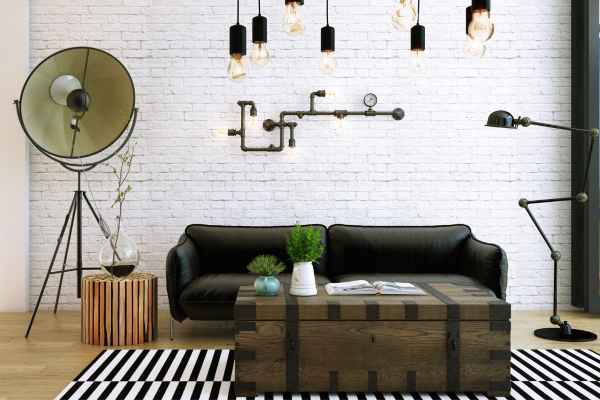
The sofa, often the centerpiece of any living room, plays a pivotal role in defining the space’s character and comfort. For a rustic industrial living room, opt for a sofa that combines materials like leather or a durable fabric with metal accents or a wooden frame. The color palette should lean towards natural tones such as browns, grays, and blacks. Which help in emphasizing a no-frills, utilitarian feel. Comfort is key, so look for a sofa with ample cushioning and sturdy construction to withstand the demands of daily use while maintaining its aesthetic appeal.
The Role of Coffee Tables
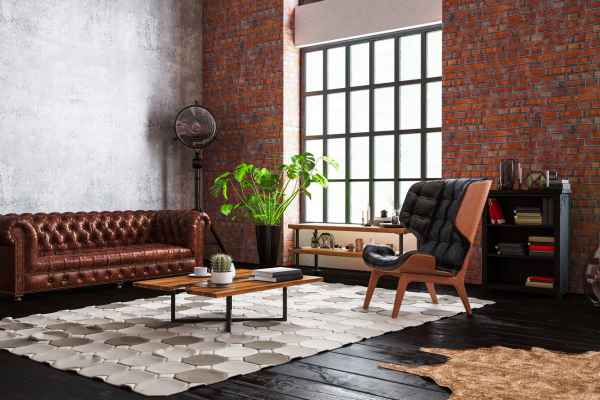
Coffee tables are not just functional items; in a rustic setting, they serve as a focal point that can tie the room together. Choose tables made from reclaimed wood or those that incorporate both wood and metal elements. The design should be simple yet striking, featuring clean lines and minimal embellishments. The finish of the coffee table can be raw and textured. Allowing the natural beauty of the material to shine through, enhancing the overall raw and unfinished look typical of the rustic industrial style.
Accent Pieces That Enhance the Style
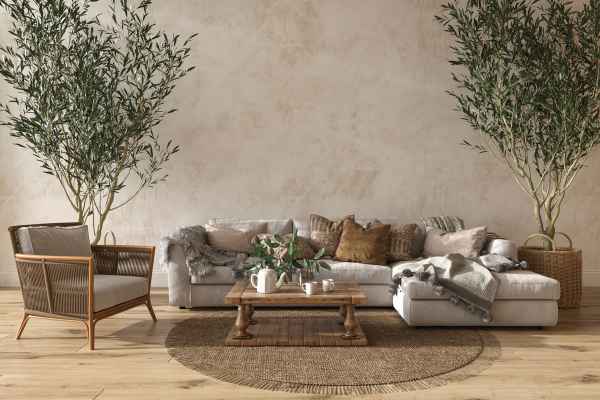
Accent pieces are the finishing touches that can make or break the rustic theme. Consider incorporating metal shelving units, industrial lamps with exposed bulbs, or wall art that features metallic or wooden elements. Other functional items like metal bar stools or wooden benches can also contribute to the aesthetic while providing additional seating. Each piece should echo the industrial theme with a nod to functionality and simplicity, using materials that age well and create a more lived-in feel.
Lighting in a Rustic Industrial Living Room
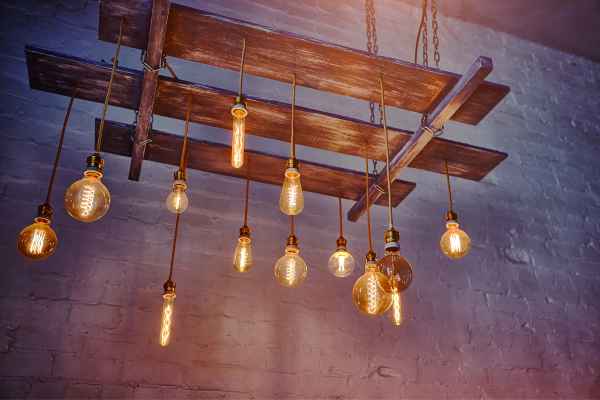
Lighting plays a crucial role in defining the ambiance of a rustic industrial living room. To stay true to this style, opt for lighting fixtures that incorporate elements such as metal, exposed bulbs, or reclaimed materials. Pendant lights with metal shades. Edison bulb chandeliers, and floor lamps with a minimalist metal frame are ideal choices that enhance the industrial vibe while providing ample lighting. The placement of these lights should be strategic. Highlighting key furniture pieces and creating an inviting atmosphere that also emphasizes the room’s unique architectural features.
Textiles and Decorations
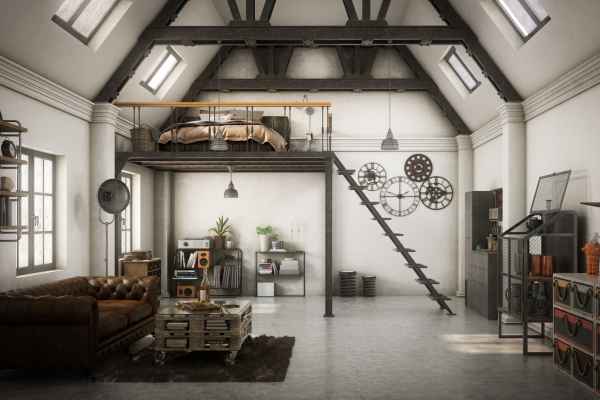
While rustic industrial decor tends to focus on hard materials like wood and metal. Textiles play an essential role in softening the space and adding layers of texture. Opt for natural fabrics such as linen, burlap, and wool in neutral tones to complement the ruggedness of the industrial elements. Throw pillows, area rugs, and heavy drapes can add warmth and comfort to the living room. When it comes to decorations, consider incorporating vintage or industrial-themed items such as old metal signs, industrial gears. And rustic wooden frames that reflect a sense of history and rugged charm.
Color Schemes for a Rustic Industrial Living Room
The color palette of a rustic living room should reflect the earthy and metallic tones typical of this style. Neutral colors like grays, browns, and blacks are commonly used as they provide a perfect backdrop for the rich textures of wood and metal. Accents in muted colors such as burnt orange, deep red, or navy can be introduced through decorations and textiles to add depth and interest to the space. The overall aim is to create a cohesive look that blends the raw textures and colors seamlessly.
Mixing Rustic Industrial with Other Styles
Rustic industrial style can be beautifully blended with other design aesthetics to create a unique and personalized space. For instance, incorporating elements of modern design, such as clean lines and sleek technology, can add a contemporary edge to the rural foundation. Alternatively, adding bohemian accessories like colorful textiles and eclectic decorations can soften the industrial harshness and introduce an element of whimsy and warmth. The key to mixing styles successfully is to maintain a balance. Ensuring that the core rustic characteristics are not overwhelmed but rather complemented by other stylistic elements. This approach allows for a flexible design that can evolve with trends and personal tastes.
Where To Buy Rustic Industrial Furniture
Finding the perfect rustic furniture for your living room can be an exciting journey. Local furniture stores often carry selections that fit this style due to its popularity. For those looking for something unique, boutiques and specialty shops often feature custom pieces made from reclaimed materials. Online marketplaces like Etsy and eBay are also great resources for finding one-of-a-kind items from independent craftsmen. Additionally, larger retailers such as Wayfair and Pottery Barn may offer a broader range of rustic furniture. Providing options that cater to various preferences and budgets.
DIY Projects for Custom Pieces
For those who prefer a more hands-on approach, DIY projects can be a rewarding way to create custom rustic industrial furniture. Building your own pieces, such as coffee tables made from pallets or shelving units from plumbing pipes and reclaimed wood. Allows for customization and ensures that your furniture fits your space perfectly. DIY projects not only give a personal touch to your living room but also allow you to fully embrace the rural and industrial elements by selecting materials that best represent the style.
Maintenance and Care for Rustic Industrial Furniture
Maintaining rustic furniture involves preserving the unique characteristics of the materials used. For wooden elements, regular dusting and occasional treatment with wood oils can help maintain their luster and prevent drying or cracking. Metal components might require periodic wiping with a damp cloth to avoid dust accumulation and rusting, especially if they feature iron or raw steel. Avoid harsh chemicals as they can damage both wood and metal finishes. Instead, opt for natural cleaning solutions to protect and enhance the materials’ longevity and appearance.
What Is Rustic Industrial Style?
Rustic industrial style is a design aesthetic that combines the warm. Comforting elements of rustic decor with the bold, hard-edged aspects of industrial design. This style is characterized by the use of raw materials such as wood and metal. Often featuring a minimalist approach with a focus on functionality. Furniture and decor in this style showcase exposed metalwork, reclaimed materials, and a neutral color scheme interspersed with utilitarian objects. The rural style is ideal for those who appreciate a blend of modern and traditional influences, creating spaces that are both stylish and practical.
What Materials Are Commonly Used in Rustic Industrial Furniture?
Rustic furniture is renowned for its incorporation of sturdy, natural materials that evoke a sense of resilience and timelessness. Wood and metal are the primary materials used in this style, each selected for their durability and aesthetic appeal. Wood varieties often include reclaimed or distressed wood, such as pine, oak, and maple, which provide a rich texture and a warm, earthy feel. Metal components are typically crafted from iron, steel, or sometimes copper, featuring raw. Unfinished looks or with patinas to add character and depth. These materials not only ensure the furniture’s robustness but also contribute to the distinct industrial vibe by emphasizing a utilitarian design ethos.
How Do I Maintain Rustic Industrial Furniture?
Maintaining rustic industrial furniture involves regular care to preserve the integrity and appearance of the materials. For wooden elements, it is important to keep them clean and dry. Use a soft cloth or brush to remove dust and debris. And consider applying a natural wood conditioner or wax periodically to nourish the wood and protect its surface. Metal components should be wiped down with a slightly damp cloth to prevent dust accumulation; if the metal is untreated. Occasional application of a protective sealant or oil can prevent rust and tarnish. Avoid using harsh chemical cleaners on both wood and metal, as these can damage the material’s finish and overall look.
Conclusion
Rustic industrial furniture is a powerful choice for anyone looking to create a living space that blends raw functionality with rural charm. The use of robust materials like wood and metal not only offers durability and practicality but also adds a distinctive character that can define the ambiance of a room. Maintaining this type of furniture requires some care but is generally straightforward. Ensuring that your pieces continue to offer both style and comfort for years to come. With its unique blend of materials and styles. Rustic furniture remains a popular choice for those who appreciate a design that is both grounded and aesthetically engaging.
